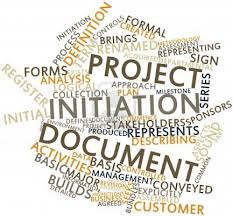
The second process in a PRINCE2 project is that of initiating the project. This process enables the project management team to realise all that is required to complete the project. The project manager will outline the complete set of tasks needed to realise the benefits of the project. These tasks will control:
- Time
- Cost
- Quality
- Scope
- Risk
Providing clarity
In delivering the project initiation, the project manager should provide clarity to the project team and other stakeholders. Specifically, the following should be made clear:
- What must be done, why, how, and what benefits are expected
- The risks, and how they will be controlled
- Expected quality, and how this will be achieved
The project manager should also outline how progress will be measured and monitored; communication processes, channels, and procedures; and the roles and responsibilities of all involved in the project.
Activities of project initiation
The activities undertaken during the initiation stage will address all the points above and enable the project board to evaluate the project.
1. Preparing risk management strategy
The risk management strategy provides the guideline for managing risk during the project lifetime. This includes describing procedures, roles and responsibilities, and the standards of risk assessment. The risk register is set up during this stage, and this will be used throughout the project to maintain a record of the status of all risks.
2. Preparing configuration management strategy
This describes the process of configuration management and maintenance of records for all project products. The project manager will also create the issue register, which is used throughout the project lifetime to maintain a record of the status of all issues. In addition, by also setting up an initial set of configuration item records, the project manager provides the baseline for management products.
3. Preparing quality management strategy
The quality management strategy will aid quality expectations to be agreed and maintained for the entire project. It specifies the techniques, standards, and responsibilities for this, and along with the quality register (which is set up during the initiation stage) maintains the status of all quality control activities.
4. Preparing communication management strategy
Communication is key to successful projects. The project manager must define the methods of communication, context, and frequency of communications necessary. The strategy will also define who is expected to communicate what, and to whom.
5. Setting up project controls
Control during the project is essential. The following must be set up during the initiation stage:
- Reporting requirements
- Stages and timings
- Issues, exemptions, and change management procedures
- Project, stage, and product tolerances
- How monitoring is managed at different management levels
6. Creating the project plan
The project manager will create the project plan, liaising with users and suppliers.
7. Refining the business case
The outline business case, written during the process of starting a project, is refined during the initiation stage, as the project manager provides more information (such as cost estimates, risks, and benefits).
The project board will use the refined business case to add weight to its decision to go ahead (or not) with the project. The business case is continually updated, at the end of every project stage, further informing decisions to continue throughout the project lifetime.
8. Assembling and presenting the project initiation documentation
To complete the initiation stage, the project manager must assemble all the above products into a single body of documentation, called the Project Initiation Documentation. This is presented to the project board, together with the next stage plan, so that the project board can authorise continuation.
In my next blog post, I’ll examine the project direction process. In the meantime, feel free to contact us with any questions or queries you may have:

